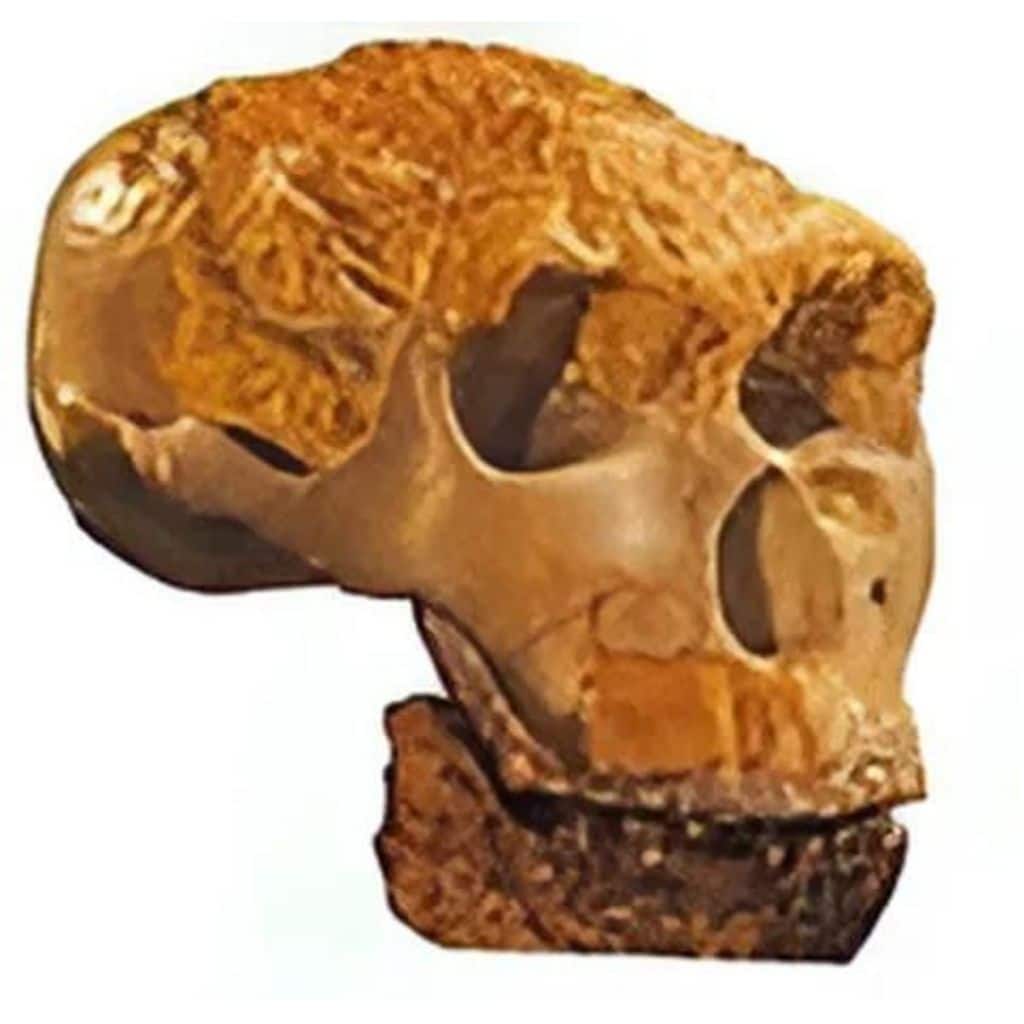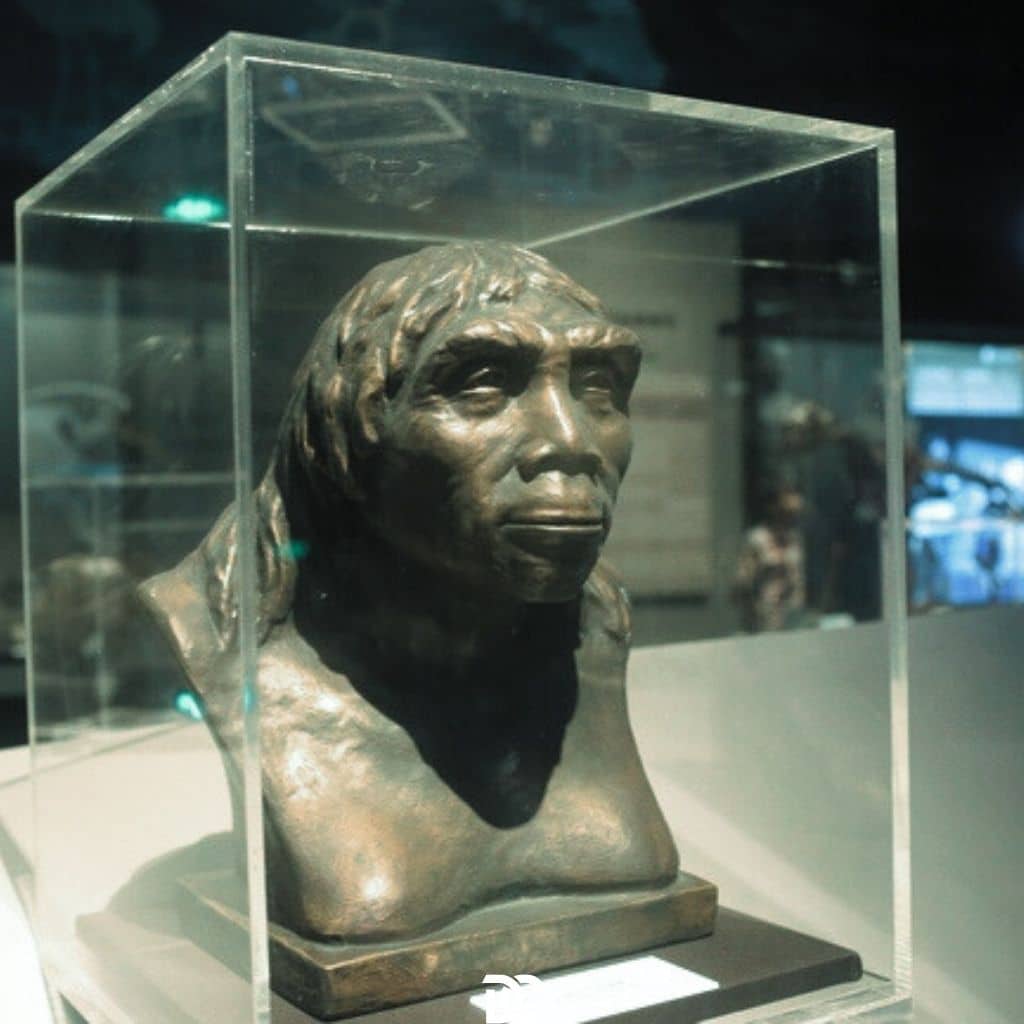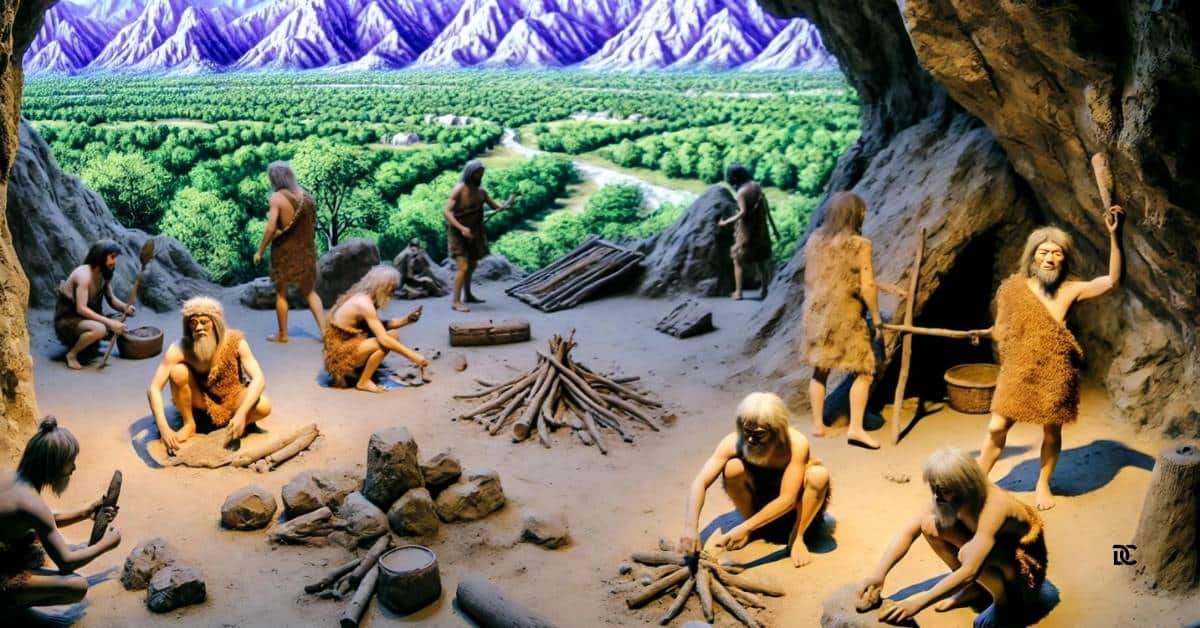China has played a pivotal role in the study of human evolution, providing some of the most significant archaeological discoveries that offer insights into the lives of our earliest ancestors. The history of humankind in China spans hundreds of thousands of years, showcasing the development from early hominins to modern Homo sapiens.
1. Yuanmou Man
On May 1, 1965, Chinese scientists found two teeth and some coarse stone tools in Yuanmou County, Henan province. Scientists determined that these are leftovers from primeval humankind, about 1.7 million years ago. They are called “Yuanmou people”. They were the ever known earliest humankind that lived in China.
Yuanmou Man represents a significant chapter in the story of human evolution. As one of the earliest known hominins in East Asia, these fossils offer invaluable information about the migration, lifestyle, and cultural practices of early human ancestors. The discoveries at Yuanmou County not only enhance our understanding of Homo erectus but also shed light on the broader patterns of human dispersal and adaptation across different environments.
Discovery of Yuanmou Man
- Location: Yuanmou County, Yunnan Province, in southwestern China.
- Year Discovered: 1965
- Discoverers: The fossils were unearthed by a team of Chinese paleontologists led by Prof. Hou Yuzhou.
- Estimated Age: Approximately 1.7 million years old.
- Dating Methods: The age was determined using stratigraphic analysis and radiometric dating techniques, which assess the layers of sediment where the fossils were found.
- Site Description: The discovery site is part of the Yuanmou Formation, known for its rich fossil beds dating back to the Pleistocene epoch.
Physical Characteristics
- Fossil Evidence: The most notable fossils include a well-preserved skullcap, parts of a jawbone, and several teeth.
- Cranial Features:
- Skull Size: Relatively small, indicative of early hominins.
- Brain Capacity: Estimated to be smaller than that of modern humans, consistent with other Homo erectus fossils.
- Facial Structure: Prognathic (projecting jaw), which is a trait seen in early human ancestors.
- Dental Features: The teeth show wear patterns consistent with a diet that includes tough plant material and possibly some meat.
Cultural and Social Aspects:
- Habitat: Yuanmou Man lived in a variety of environments, including forests and open grasslands, suggesting adaptability to different climates and terrains.
- Tool Use: Evidence suggests the use of simple stone tools, likely for cutting and processing food.
- Diet: Likely omnivorous, with a diet consisting of both plant and animal sources.
- Use of Pigments: One of the most remarkable discoveries at the site is the presence of ochre-stained pebbles, which are believed to have been used as pigments for body decoration or other symbolic purposes.
2. Lantian Man, Peking Man

For more than 50 years, primeval relics of humankind had been found in more than 20 places on China’s mainland , from Liaohe in the north to Zhujiang in the south; most of them were found in the Yellow River and the Changjiang River valley. The “Lantian people” found in Shaanxi province and the famous “Peking Man” are among them. China is the country in the world where most relics of primeval humankind were found.
Also Read
During the early 20th century, at the cave in Longgu hill, Zhoukoudian, southwest of Beijing, bones of primeval humankind were found. They lived 700 to 200 thousand years ago. The “Peking Man” retained the features of apes, but they could use tools in labor.
They were humans. They used stones to strike and to make coarse stone tools. The era when such stone tools were used is called “Old Stone Age”. They also cut down branches to make bat. Stone tools and bats were the earliest tools that humankind used in labor, and to be able to make tools is the fundamental factor for distinguishing humankind from animals.
The “Peking Man” used natural fire. They used fire to bake foodstuff, and to make light and keep warmth, also to scare away beasts. The use of fire strengthened their ability to conquer Nature, was a great progress in the evolution of humankind.
The “Peking Man” lived in a hostile environment and used simple and coarse tools. Individuals could not survive by their own efforts. They worked together in groups of several persons each and shared fruits of labor and lived a social life, but it was hard. This is also one characteristic of early human society in primeval times.
During the long period of several hundred thousand years that followed, our ancestors struggled hard with Nature and made progress step by step.
Discovery of Peking Man
- Location: Zhoukoudian site, near Beijing, China.
- Year Discovered: 1923
- Discoverers: Initially discovered by Otto Zdansky, a Swiss-German paleontologist. Later excavated extensively by a team led by Davidson Black.
- Site Description: Zhoukoudian is a cave system that has yielded a rich collection of Homo erectus fossils, including skullcaps, teeth, and limb bones. The site is part of the larger Zhoukoudian Formation, known for its extensive fossil beds dating back to the Middle Pleistocene epoch.
- Estimated Age: Approximately 770,000 to 230,000 years old.
- Dating Methods: The age of Peking Man fossils was determined using stratigraphic analysis and radiometric dating techniques, such as potassium-argon dating. These methods assess the volcanic layers surrounding the fossil-bearing strata to establish a reliable timeline.
Physical Characteristics
- Fossil Evidence: The most notable fossils include well-preserved skullcaps, parts of a jawbone, several teeth, and limb bones.
- Cranial Features:
- Skull Size: Relatively small compared to modern humans, indicative of early hominins.
- Brain Capacity: Estimated between 900 to 1,100 cubic centimeters, smaller than that of modern Homo sapiens, consistent with other Homo erectus fossils.
- Facial Structure: Prognathic (projecting jaw), a trait commonly seen in early human ancestors, contributes to a robust facial profile.
- Dental Features:
- Teeth Structure: The teeth are large and robust, with thick enamel. Molars and premolars are especially large and adapted for grinding tough, abrasive foods.
- Wear Patterns: The teeth show wear consistent with a diet that included a significant amount of plant material and possibly some meat, indicating an omnivorous diet.
Cultural and Social Aspects:
- Tool Use: Peking Man is associated with the Acheulean stone tool industry, characterized by bifacial handaxes and cleavers, reflecting advanced manufacturing techniques.
- Use of Fire: Evidence suggests that Peking Man may have controlled and used fire for cooking, protection, and social interactions, although definitive proof remains a topic of ongoing research.
- Settlement Patterns: The presence of semi-subterranean homes and communal living areas indicates a degree of social organization and cooperation among groups.
- Burial Practices: Some sites show evidence of deliberate burial practices, suggesting early forms of ritualistic behavior and possibly complex social structures.
3. Upper Cave Man

18,000 years ago, in the same region of the “Peking Man”, there also lived another primeval humankind. Their outlook was almost alike to modern men. Their bones were found in a cave on top of the Longgu hill; that’s why they are called the “Upper Cave Man”.
The Upper cave man still used ground stone tools, but they knew how to polish and drill holes on stone, and they also knew how to make bone needles and the other similar instruments. They also made ornaments. The Upper cave man knew how to make fire by hand. Fishing, hunting and collecting were their major productive labor.
The social unit where the Upper caveman lived was a “clan” linked by genealogy. One clan had only several dozen persons descended from a common ancestor. They used common tools in collective labor and shared food among the members, and they lived together. Such a living unit is called a “clan commune.” Members of the clan relied on collective efforts to struggle against Nature. Human society was, by that time, in the “clan commune” stage of primitive society.
Discovery of Upper Cave Man
- Location: Upper Cave, Zhoukoudian site, near Beijing, China.
- Year Discovered: 1983
- Discoverers: A team of Chinese archaeologists led by Professor Wei Bin established the Upper Cave as a separate stratigraphic layer distinct from the Lower Cave (Peking Man) findings.
- Site Description: The Upper Cave is part of the larger Zhoukoudian archaeological site, which is renowned for its rich fossil deposits. Unlike the Lower Cave, which primarily yielded Homo erectus (Peking Man) fossils, the Upper Cave has provided evidence of more recent human activity, including remains of early modern humans and associated artifacts.
- Estimated Age: Approximately 40,000 to 30,000 years old.
- Dating Methods: The age of the Upper Cave Man fossils was determined using radiocarbon dating and stratigraphic analysis. These methods involve analyzing the layers of sediment in which the fossils were found and measuring the decay of radioactive isotopes in organic materials to establish a reliable timeline.
Physical Characteristics
- Fossil Evidence: The most notable fossils include well-preserved skull fragments, partial skeletons, and numerous teeth. These remains exhibit features characteristic of anatomically modern humans (Homo sapiens).
- Cranial Features:
- Skull Shape: The skulls are more rounded and less robust compared to Homo erectus, with a higher forehead and reduced brow ridges.
- Brain Capacity: Larger brain volumes, comparable to or slightly smaller than modern humans, estimated around 1,300 to 1,500 cubic centimeters.
- Facial Structure: Less prognathic (forward-projecting jaw) with flatter faces, similar to contemporary Homo sapiens.
- Dental Features:
- Teeth Structure: Smaller and less robust teeth compared to Peking Man, with more refined enamel.
- Wear Patterns: Indicative of a varied diet, including both plant and animal sources, with evidence of processing food using tools.
Cultural and Social Aspects:
- Tool Use: Associated with the Upper Paleolithic stone tool industry, including blades, scrapers, and other advanced tools made using the Levallois technique.
- Use of Fire: Evidence suggests the controlled use of fire for cooking, warmth, and protection, similar to earlier human populations.
- Artistic Expression: Artifacts such as engraved bone tools and decorative items indicate early forms of symbolic behavior and artistic expression.
- Settlement Patterns: Indications of semi-permanent or permanent settlements with organized living spaces, reflecting more complex social structures.
- Burial Practices: Some sites show evidence of intentional burial, suggesting the development of ritualistic or symbolic practices.
- Diet and Subsistence: Analysis of animal bones and plant remains indicates a diverse diet, with hunting of large game and gathering of wild plants.






